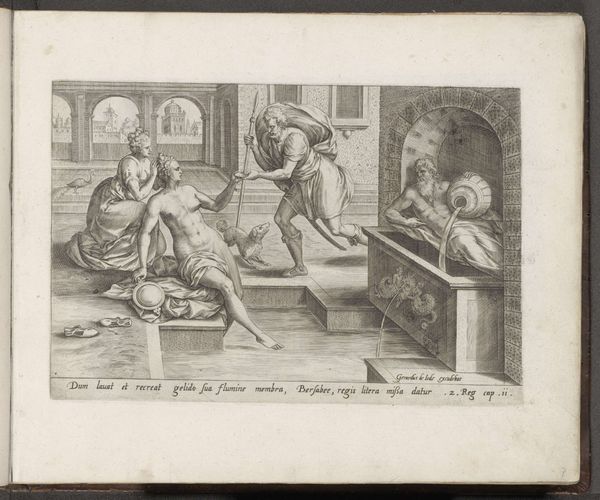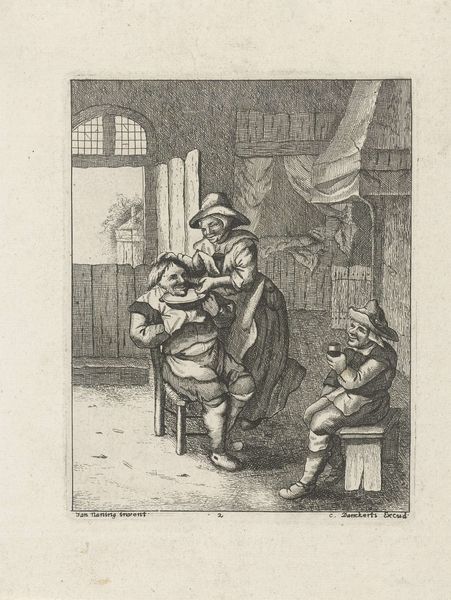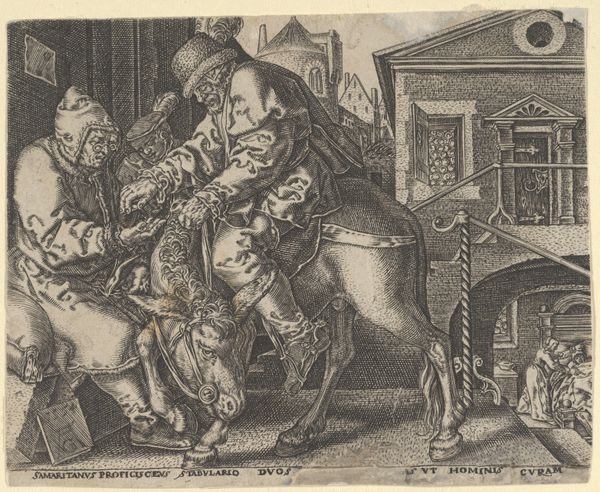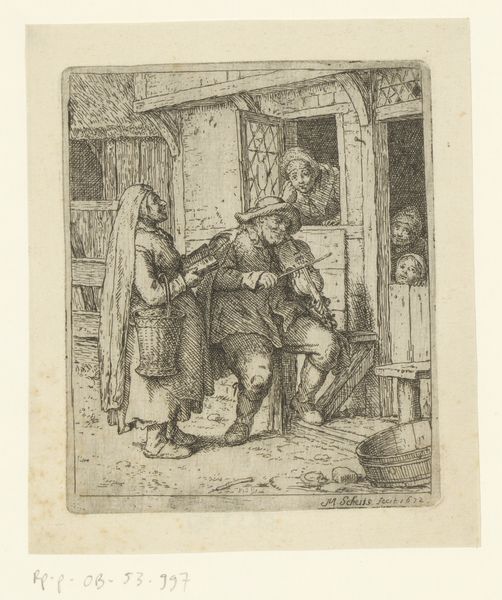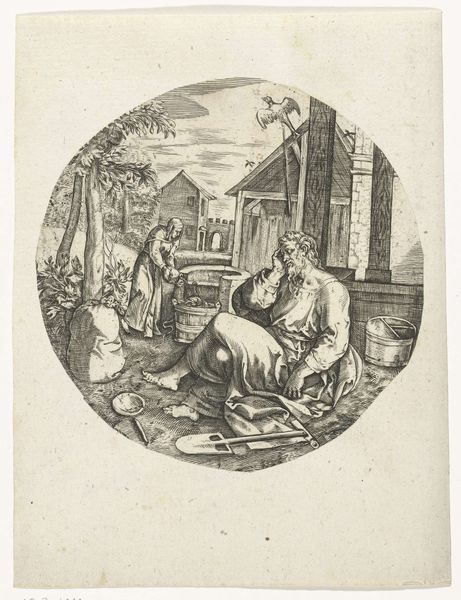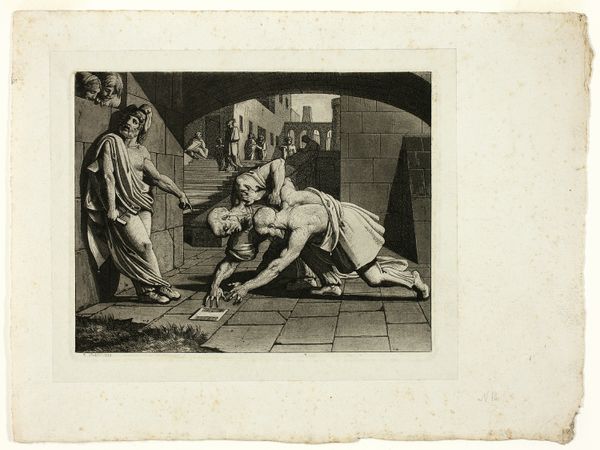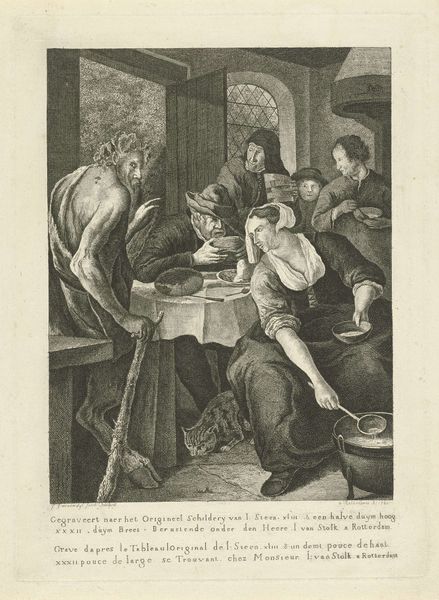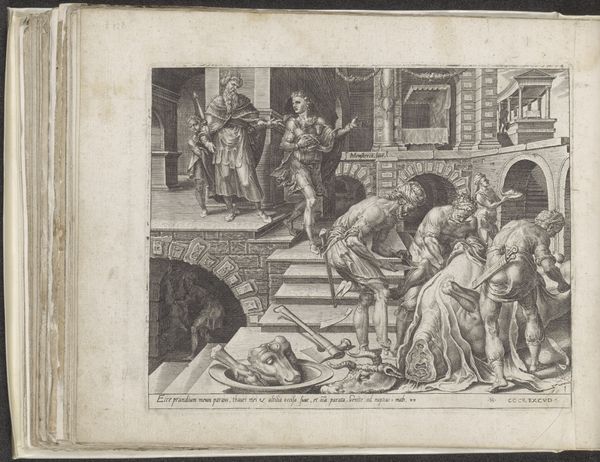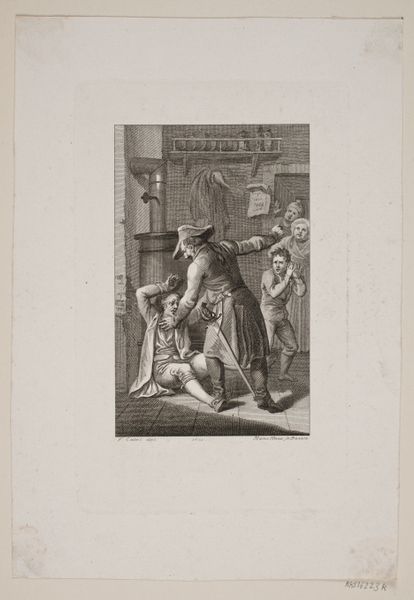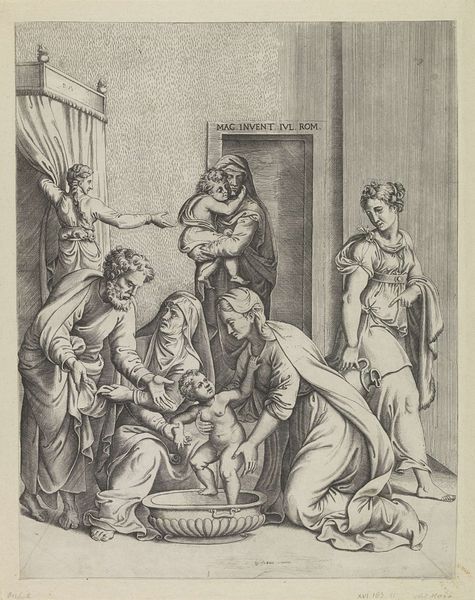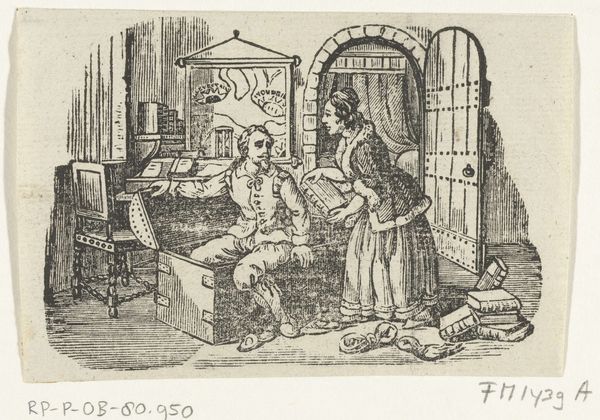
Dimensions: height 205 mm, width 256 mm
Copyright: Rijks Museum: Open Domain
This print, Gulzigheid, was made by Pieter Jalhea Furnius around the turn of the 17th century. It's made using an engraving process, where the design is incised into a metal plate, likely copper, and then printed. Look closely, and you'll notice how the lines create texture and volume. This painstaking process reflects a society increasingly focused on skill and precision. The figure embodies the sin of gluttony. Notice the barrel and overflowing bowl, implying overconsumption. The pig is another symbol of unrestrained appetite. The artist is making a moral point about the dangers of excess, but also about the social consequences of unchecked greed. Engraving was itself a kind of luxury trade, producing images for a growing market of wealthy consumers. So, there’s a tension here: the print critiques overindulgence even as it caters to it. This makes us consider how art can simultaneously reflect and critique the values of its time.
Comments
No comments
Be the first to comment and join the conversation on the ultimate creative platform.
